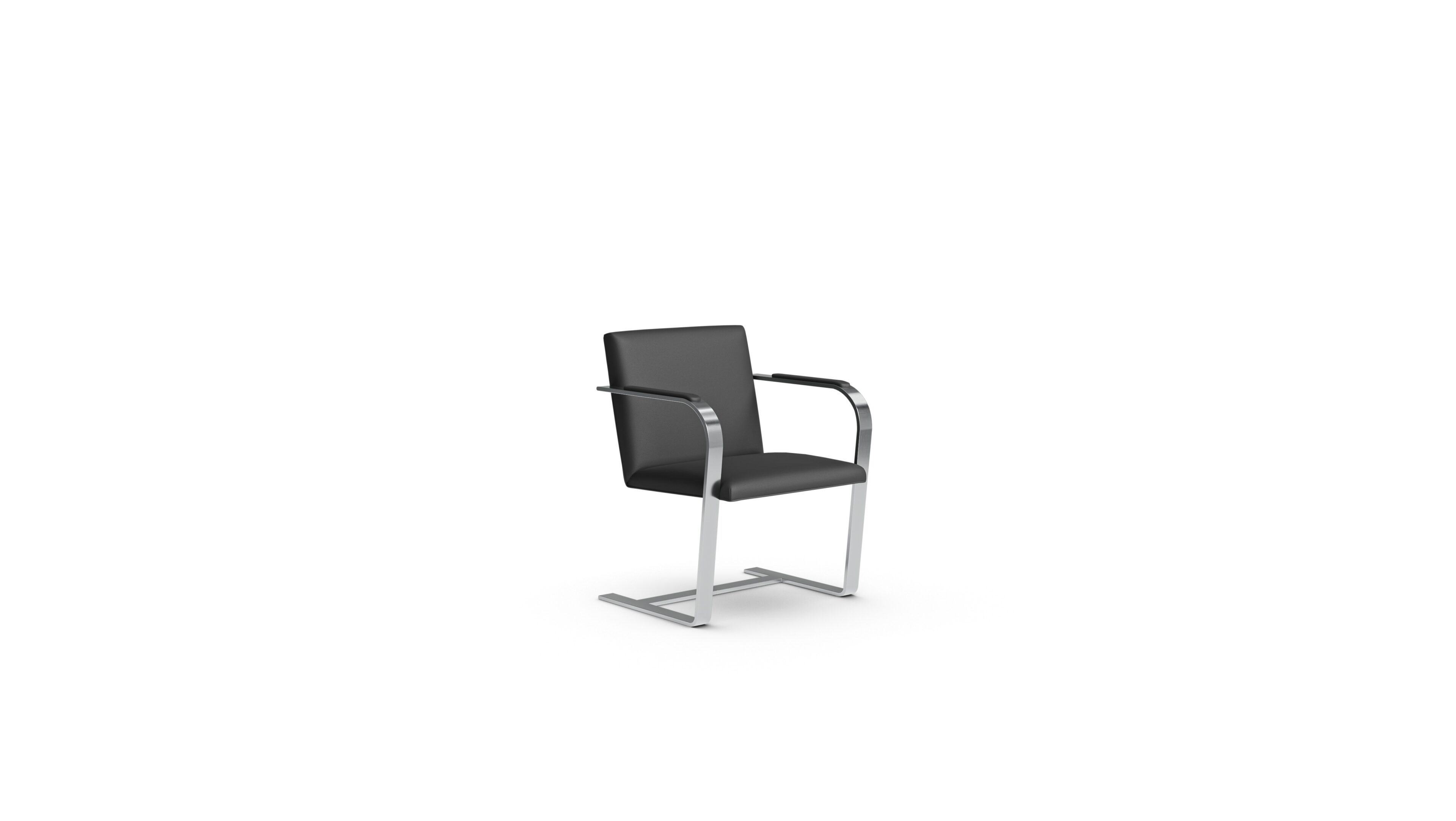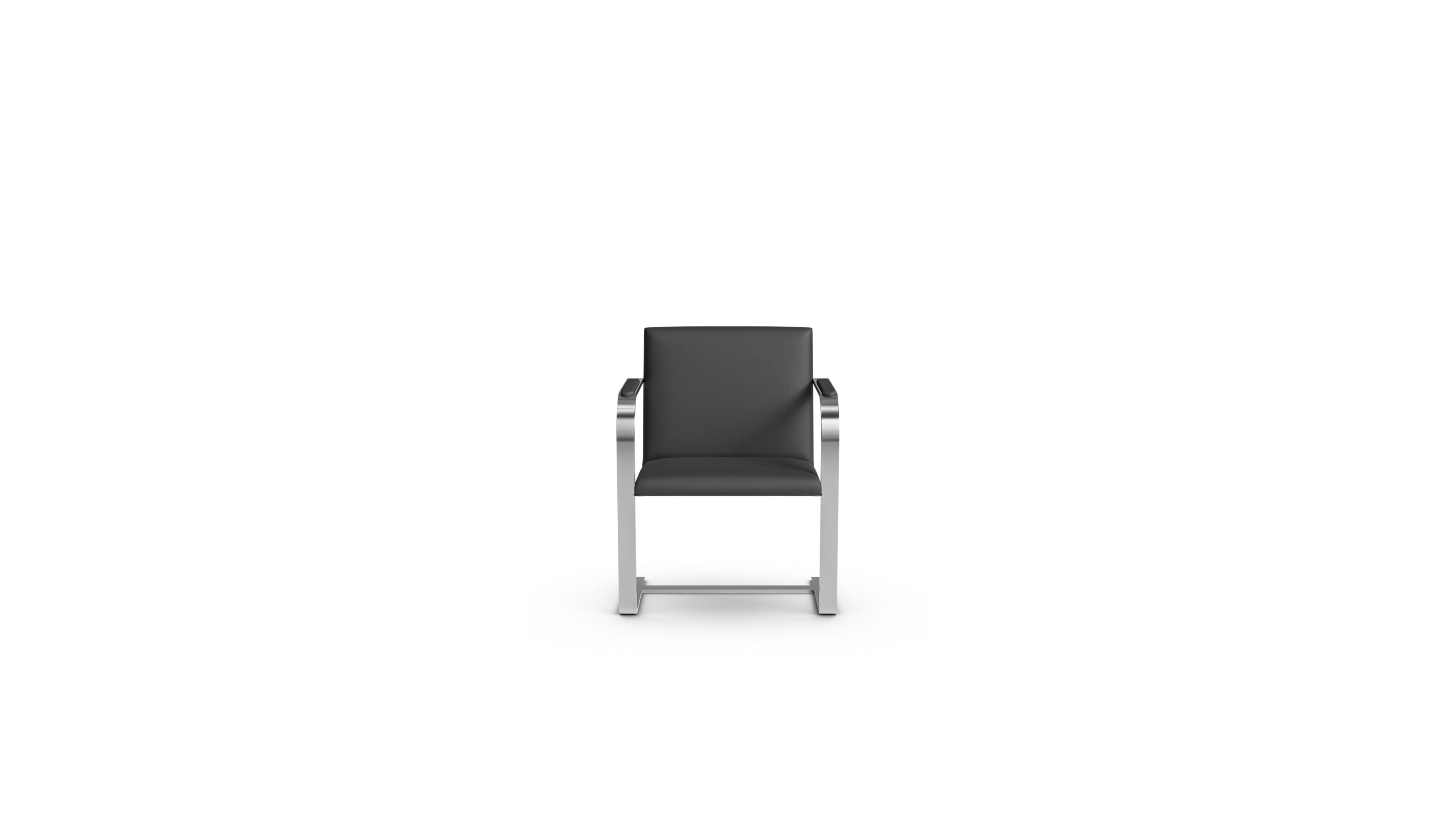Brno Armchair Flat Bar
The Brno Armchair: Flat Bar was designed by Ludwig Mies van der Rohe in 1930 for the master bedroom of the Tugendhat House in Brno, Czech Republic. The Tugendhat House stands as a significant milestone in modern architecture, known for its open-plan design, use of industrial materials like steel and glass, and integration of interior and exterior spaces. Collaborating with Lilly Reich, Mies designed the chair to align with the home’s minimalist aesthetic.
The Brno Chair’s cantilevered flat steel frame reflects Mies’s philosophy of "eliminating the superfluous," achieving structural integrity and comfort without the need for rear legs. The design relies on the tensile properties of steel to provide subtle flexibility and support. The upholstered seat and backrest add to its functionality while maintaining the clean, modern silhouette that defines its design.
The Flat Bar version of the Brno Armchair was later refined for the Four Seasons Restaurant in New York’s Seagram Building, another of Mies’s significant architectural projects. The adaptation demonstrated the chair’s versatility in complementing different interiors while maintaining its timeless design.
Architectural historian Peter Blake notes that Mies’s work consistently reduced designs to their most essential elements, from skyscrapers to dining chairs. The Brno Armchair: Flat Bar remains a staple of modern design and is highly regarded for its versatility in dining, hospitality, visitor, office, and conference settings.
Shop the Brno Armchair: Flat Bar, originally designed by Mies van der Rohe, online in Canada and the USA. Bring the history of Bauhaus Design and International Style into your space.
Also available in the Brno Armchair: Tubular version.














